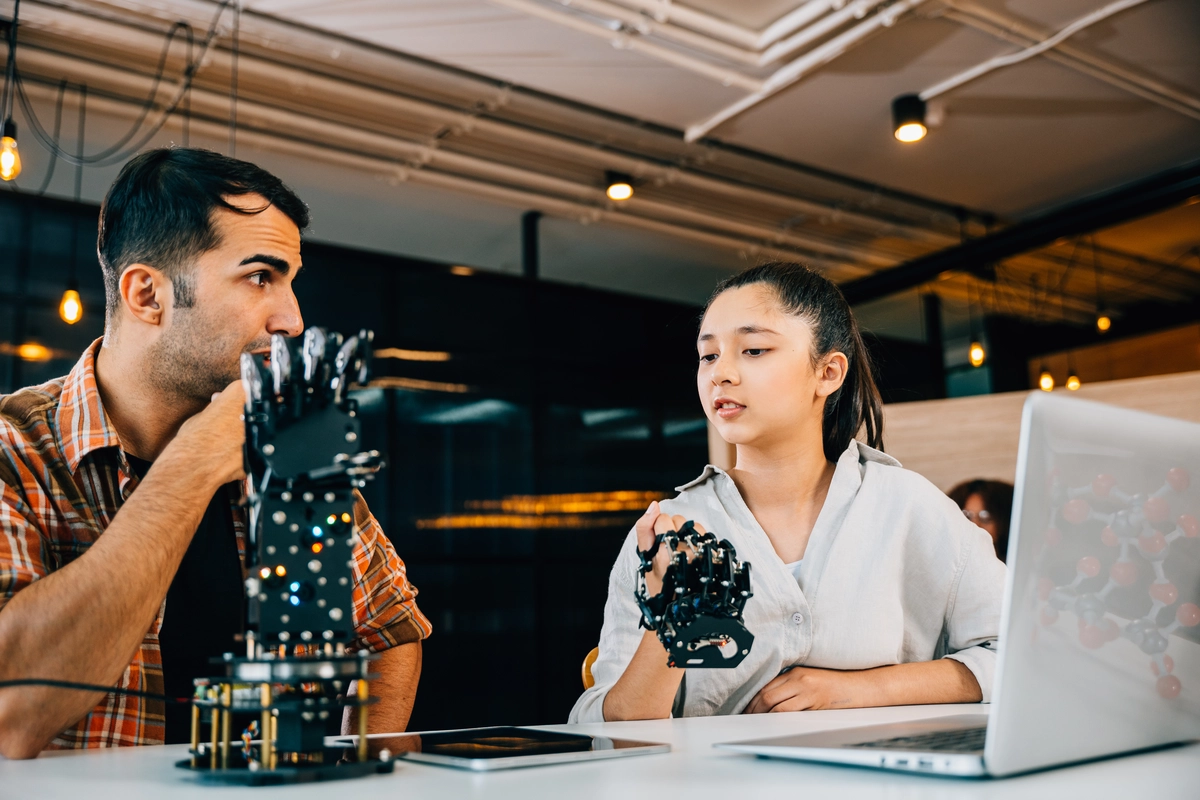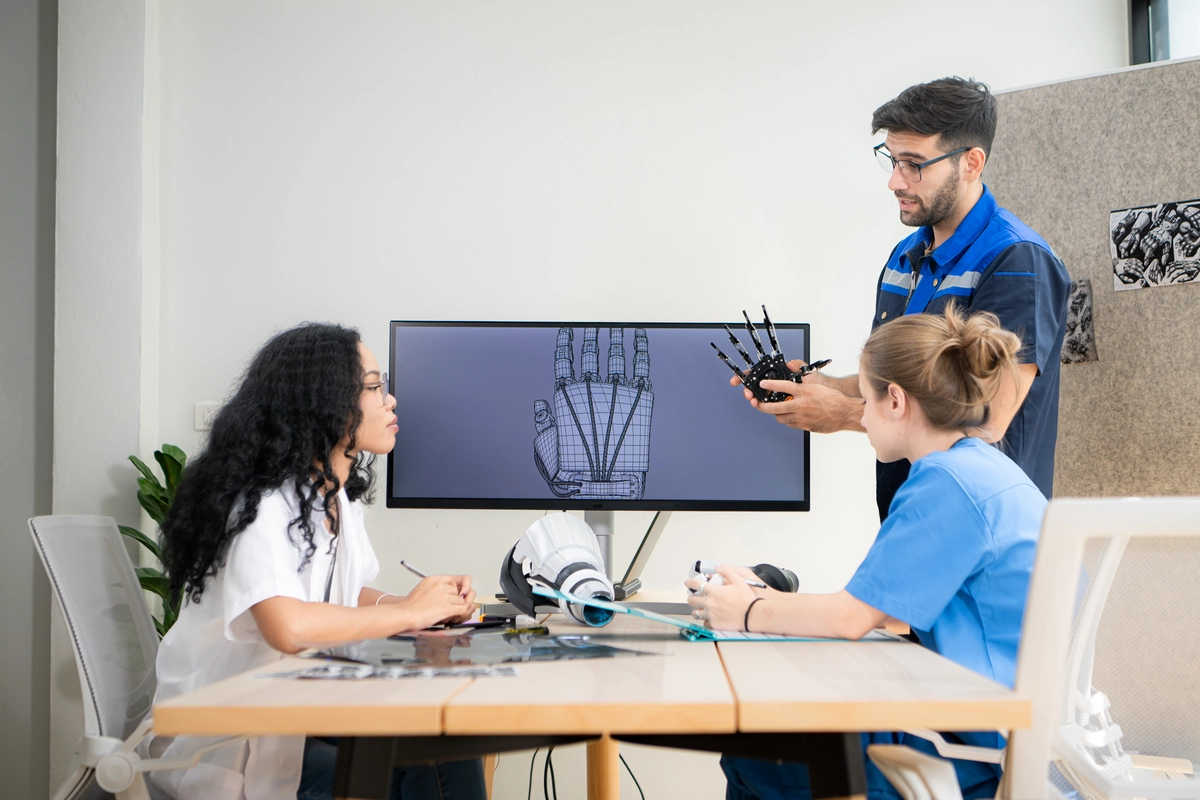What Is the Impact of AI on Human-Computer Interaction?
Moreover, AI has revolutionized user interfaces. Gone are the days of static menus and predictable interactions. With AI, interfaces can adapt to user behavior in real-time, offering personalized recommendations and streamlining workflows. This dynamic responsiveness not only enhances usability but also makes interactions more intuitive and enjoyable.
In the field of customer service, AI-driven chatbots have become invaluable. These virtual agents can handle customer queries round the clock, providing instant responses and freeing up human agents for more complex tasks. Through natural language processing and machine learning, these chatbots continually improve their ability to understand and respond appropriately to diverse customer inquiries.

Revolutionizing Interfaces: How AI Is Redefining Human-Computer Interaction
Imagine a world where your computer isn’t just a tool, but a companion that anticipates your needs. This isn’t science fiction anymore; it’s the reality AI is crafting. By analyzing patterns in our behavior and learning from vast amounts of data, AI systems can predict what we want before we even ask for it. This predictive capability is what powers smart homes, self-driving cars, and personalized recommendations on streaming platforms.
One of the most visible impacts of AI on HCI is in the realm of virtual assistants like Siri, Alexa, and Google Assistant. These AI-powered entities not only recognize speech but also interpret the nuances of language. They can answer questions, control smart devices, and even tell jokes, all through natural conversation. It’s like having a knowledgeable friend who’s always ready to help, available at the sound of your voice.
Beyond voice interfaces, AI is enhancing user experiences through intuitive design. Interfaces are becoming more adaptive, learning from user interactions to tailor the experience to individual preferences. Whether it’s suggesting the next song to play or rearranging app icons based on usage patterns, AI is making interactions smoother and more personalized.
In the world of business and industry, AI-driven interfaces are optimizing workflows and decision-making processes. For example, AI-powered analytics tools can sift through mountains of data to extract actionable insights, empowering businesses to make informed decisions faster than ever before. This efficiency not only saves time but also enhances productivity and innovation.
As AI continues to evolve, so too will our interactions with technology. The future promises even more seamless integration of AI into everyday tasks, making our digital experiences more intuitive, personalized, and effective. Whether you’re navigating a smart city or collaborating with colleagues across continents, AI-driven interfaces will be there every step of the way, transforming how we live, work, and play.
From Touch to Thought: The Evolution of AI in Human-Computer Interfaces
Imagine a world where your thoughts seamlessly translate into actions on your computer screen. It sounds like something out of a sci-fi movie, right? Well, thanks to advances in artificial intelligence (AI), this futuristic concept is becoming a reality faster than you might think.
AI has come a long way from its early days of basic voice commands and touch interactions. Today, AI-driven human-computer interfaces are revolutionizing how we interact with technology. It’s no longer just about tapping and swiping; now, AI can interpret gestures, facial expressions, and even brain signals to control devices.
One of the most exciting developments is in the field of brain-computer interfaces (BCIs). These interfaces allow users to control computers and devices using only their thoughts. By detecting and interpreting neural signals, BCIs can enable people with disabilities to communicate and interact with the world in ways that were previously unimaginable.
But BCIs are just the tip of the iceberg. AI is also enhancing traditional touch-based interfaces by making them more intuitive and responsive. Imagine a virtual assistant that not only listens to your commands but also understands the context and anticipates your needs. This level of sophistication is made possible by AI algorithms that learn from user behavior and adapt in real time.
Furthermore, AI-powered interfaces are making technology more inclusive. By recognizing diverse voices, accents, and languages, AI systems can ensure that everyone has equal access to digital tools and services. This inclusivity is crucial in a world where technology plays an increasingly central role in everyday life.
As AI continues to evolve, so too will human-computer interfaces. The days of cumbersome keyboards and mice may soon be behind us as AI enables more natural and immersive ways of interacting with technology. Whether it’s through gestures, voice commands, or even thoughts, AI is ushering in a new era of computing where the boundaries between humans and machines are rapidly blurring.
Beyond Screens: Exploring AI’s Role in Next-Gen User Experiences
Imagine a world where your favorite apps anticipate your needs before you even realize them. This is the promise of AI-driven user experiences. By analyzing vast amounts of data in real-time, AI algorithms can tailor interactions to suit your preferences and habits seamlessly. Whether it’s suggesting the perfect playlist based on your mood or predicting your next purchase, AI is redefining personalization.
One of the most exciting developments is AI’s ability to create immersive environments that go beyond the visual. Virtual Reality (VR) and Augmented Reality (AR) applications are leveraging AI to not only enhance what we see but also to simulate other senses like touch and sound. This means experiencing a concert from the front row or exploring ancient ruins from your living room can be as vivid and engaging as being there in person.
Moreover, AI is making interfaces more intuitive and natural. Voice assistants like Siri and Alexa have already become household names, but the future holds even more potential. Imagine conversing with AI in a way that feels like chatting with a friend who knows you inside out. This level of interaction is not just about convenience but about creating meaningful connections with technology.
Beyond individual interactions, AI is also driving innovations in collaborative and social experiences. From multiplayer gaming to virtual meetings that feel lifelike, AI is breaking down barriers of distance and time, enabling richer connections and collaborations across the globe.
In essence, AI’s role in next-gen user experiences goes beyond enhancing what we see on screens. It’s about creating immersive, personalized, and intuitive interactions that blur the lines between the digital and physical worlds. As AI continues to evolve, so too will our expectations of what technology can achieve, opening doors to new possibilities that we can only begin to imagine.
AI-Powered Personalization: Transforming User Interaction Dynamics
AI-powered personalization utilizes sophisticated machine learning models to decipher vast amounts of data in real-time. By understanding your browsing history, purchase patterns, and even social media activity, these systems create a detailed profile of who you are as a user. This isn’t just about showing relevant products or articles; it’s about anticipating your needs before you even express them.
Take the example of online shopping. When you visit an e-commerce site, AI algorithms can recommend products based not only on what you’ve bought before but also on what others with similar tastes have purchased. It’s like having a personal shopper who knows your style preferences better than you do.
But AI-powered personalization goes beyond commerce. Think about streaming services like Netflix or Spotify. These platforms use AI to curate playlists or suggest movies and shows based on your viewing habits. It’s like having a friend who always knows the perfect movie for a cozy night in or the ideal soundtrack for a road trip.
The impact of AI-powered personalization extends to content consumption as well. News websites can prioritize articles based on topics you’ve shown interest in, ensuring that you receive updates on subjects that matter most to you. Social media platforms customize your feed to show posts from friends you interact with the most, keeping you engaged and connected.

